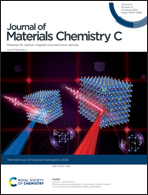Harnessing biological applications of quantum materials: opportunities and precautions
Abstract
Since the discovery of graphene, research on two-dimensional (2D) quantum materials has generated a plethora of novel materials with the potential to significantly change our lives. Owing to their unique quantum, electronic, and excitonic properties, biosensing and bio-imaging are two specific areas where these quantum materials have started to make a large impact. This article provides a holistic overview into the properties, synthesis methods, biological applications, and toxicology studies of commonly studied quantum materials. Recent research into the biological applications of graphene and transition metal dichalcogenides is highlighted and their unique electronic properties are explored. Though tremendous research is generated in discovering new 2D materials, toxicology studies in the area are lacking. Historically, toxicology studies have lagged significantly behind new material discovery often with dire consequences. The product development cycle of polymeric materials is a testament to the negative consequences of having a reactionary approach to toxicology. With 2D materials set to become a widespread part of everyday life in the near future, we comment on the need for a proactive approach to examining and understanding their toxicology.

- This article is part of the themed collections: Journal of Materials Chemistry C Emerging Investigators and Journal of Materials Chemistry C Recent Review Articles


 Please wait while we load your content...
Please wait while we load your content...
